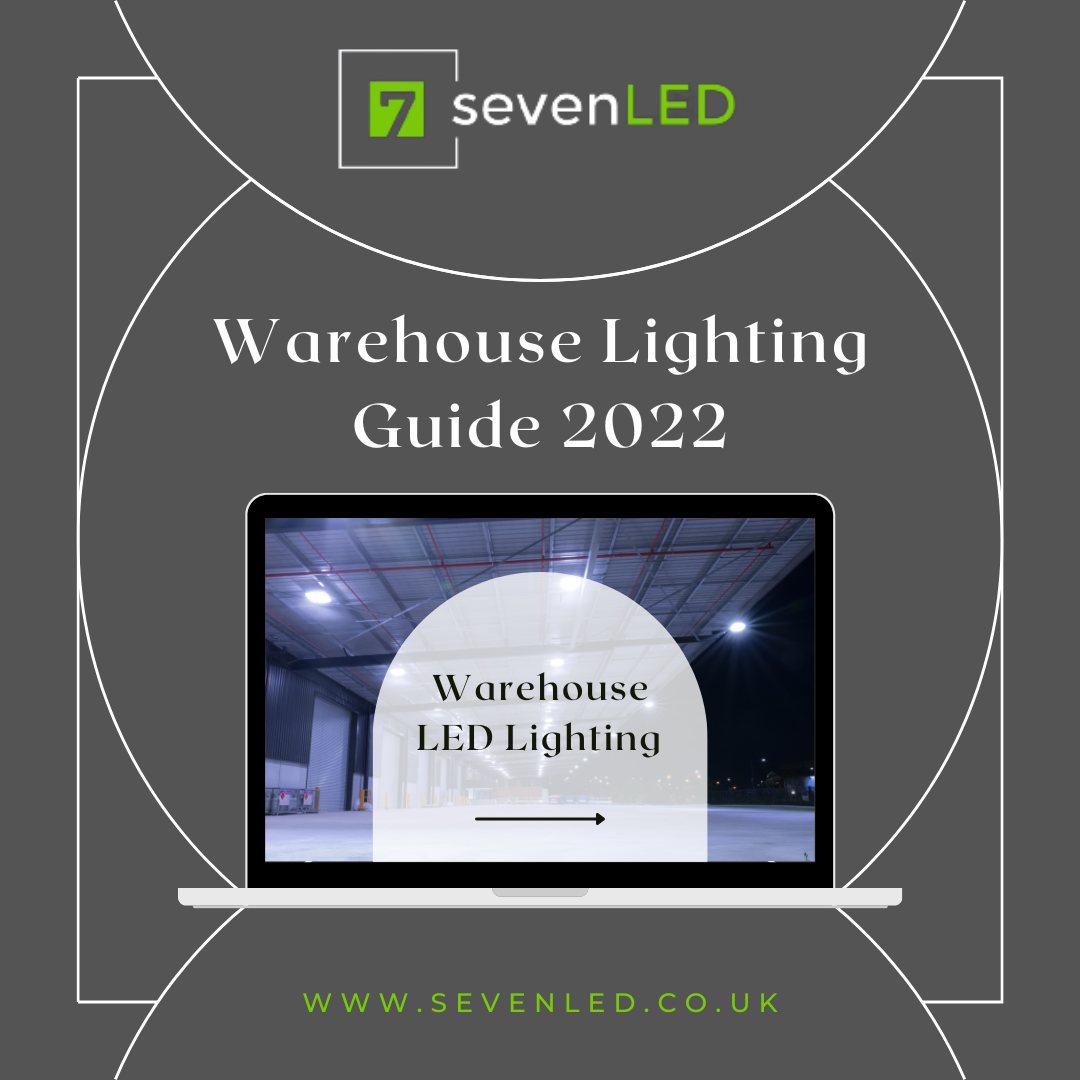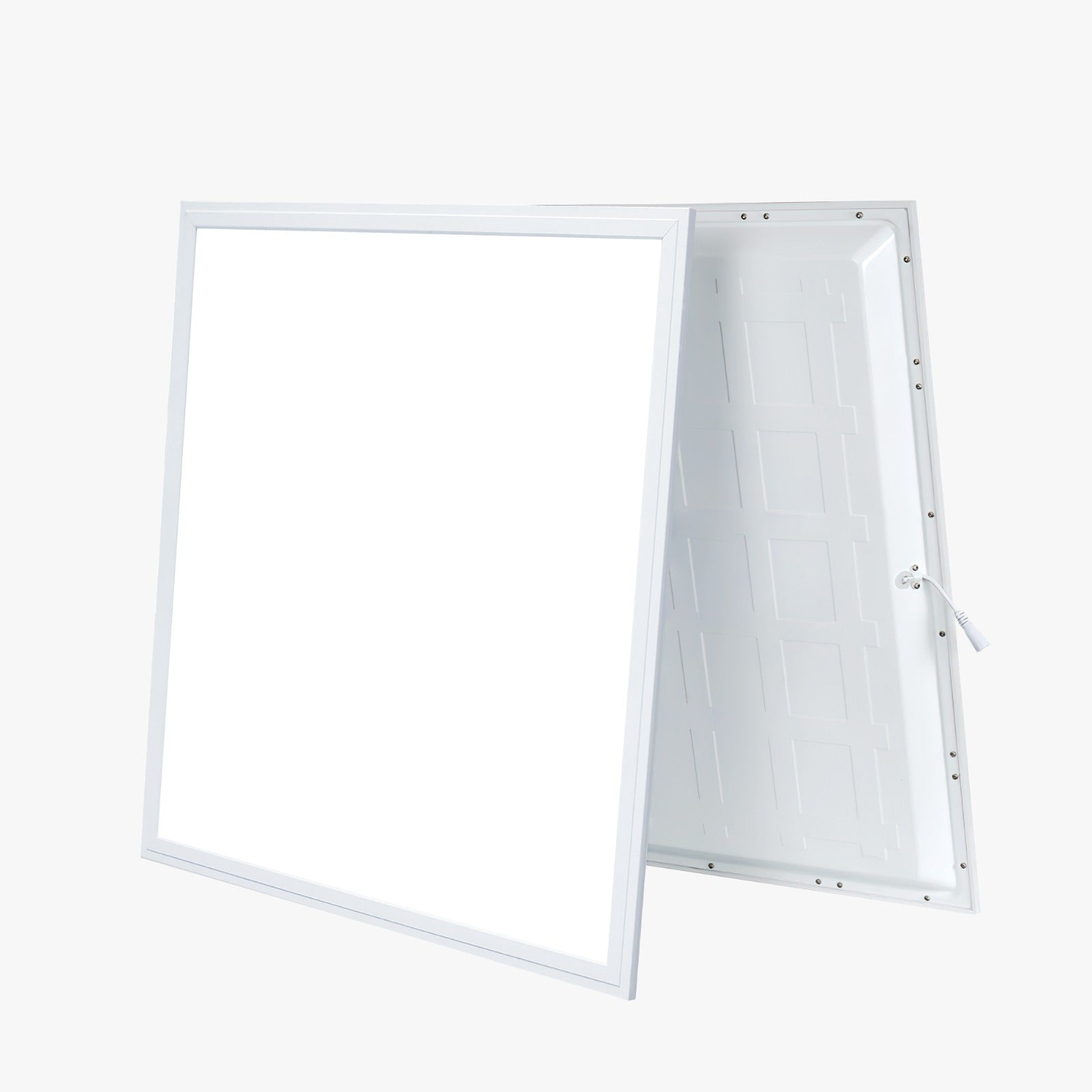- Which Type of Fitting?
- LED vs SON vs HID
- How Many Luminaires do I Need?
- Lux Levels for Different Areas
- Emergency Warehouse Lighting
- Warehouse Lighting Sensors
- Which Colour Temperature?
Which Fittings?
Which fitting or style of fitting that is best for your warehouse can depend on a number of factors, such as installation height, what the area is used for (racking or open area as examples), how frequently the area is in use, if there is already emergency lighting in place and more.
For areas where the installation height is over 5m, we would usually suggest a UFO style High Bay Light, for areas where the lighting fitting will be installed at under 5m, an LED Batten, Low Bay or Panel may be more suitable.
If the area you are looking to light is racking, or narrow isles, a fitting that has a narrow beam angle would be best suited. Examples include a Linear High Bay or a UFO High Bay with a 90 or 60 degree Reflector, the narrow beam angle of the light ensure that you are not wasting energy lighting the top of the racking.
Areas that are used periodically, or have a low footfall may benefit from motion sensors, that can either dim the light when not in use, or turn them off altogether when nobody is in the area, again adding to energy savings and reduced carbon footprint.
If an area is in constant use, you may still benefit from Daylight Sensors (Daylight Harvesting Sensors), if an area has good natural light available, you can programme these sensors to dim the light fittings to make the most of the natural light available, again reducing energy usage and therefore cost.
It is important for all commercial areas to have adequate emergency lighting in place. There are plenty of ways to ensure your emergency lighting requirements are covered, one option is to use emergency warehouse lighting, instead of standalone emergency lighting. The main benefit of using an emergency warehouse fitting instead of a standalone unit is that there is the one fitting to install, maintain and test.
LED vs HID vs SON
LED Lighting options are the clear go to option for your warehouse in 2022, as opposed to 'HID' or 'SON' lamps, but it is still worth comparing the options, if only to show the many benefits of upgrading to LED.
The primary 2 reasons that people upgrade to LED lighting is to reduce energy usage, and therefor running costs, and to improve lighting levels to a better and safer standard. Changing from a Son or HID fitting to an LED can reduce energy usage by up to 70%, and you can typically replace a 400W unit for a 150W LED model. This naturally reduces energy usage and cost, but LEDs come with better warranties and lower maintenance costs, as they need replacing less frequently.
How Many?
How many warehouse lights you need varies greatly depending on the size of the area, installation height and what the area is used for (and therefore required lux level). A smaller area that needs a higher lux level might actually need more light fittings, and similarly, the higher the lights are installed, the more you will need to achieve the required lux level, or you will need a higher lumen output fitting.
The best way to find how many LED Warehouse Lights you need is to ask our lighting design team to calculate exactly how many. A lighting design can show you how many lights are needed to give a desired lux level, when installed at a certain height.
We do have a handy 'quick guide' on how many luminaires you need to achieve a certain lux level for certain scenarios, this can be found here.
Lux Levels
Making sure you achieve the required lux levels for the environment you are lighting is vital for health and safety, quality control and comfort while working.
The table below provides a guide to the CIBSE recommended lux levels for some commercial warehouse environments. Note that this should be used as a guide only, and specific areas may need different lighting levels. The below lux levels are based on the C.I.B.S.E guide for interior lighting.
If you are unsure about the required lux levels to aim for in your project, please give us a call and our team of experts will be happy to assist.

Emergency Warehouse Lighting
As with all commercial buildings, emergency lighting requirements must be met, so that users can safely exit a building in the event of power failure. This can be achieved with standalone non-maintained (only light in emergency) or maintained fittings (lighting in general use that also have a battery for emergency use).
There are pros and cons to both options, standalone units can be cheaper to purchase, but will also require 2 units to be installed rather than 1, whereas a UFO High Bay that has a built in emergency battery module may cost more initially, but there is the one unit to install and maintain.
Similar to your main warehouse lighting, the best way to ensure you have adequate emergency lighting coverage is to have a lighting design done. In the event of an emergency, your emergency lighting should provide one lux at ground level for all your exit routes. If in doubt or you have any questions, please give our team a call.
Warehouse Lighting Sensors
As we know, LED lighting is energy efficient and can dramatically reduce energy usage, energy costs, and your carbon footprint; this can be improved even further by using sensors help only use the lighting as much as is needed: there is no use lighting a room that nobody is in (usually).
There are two main options when discussing warehouse lighting sensors, motion sensors, which will activate the light when movement is detected in the specified area, and daylight harvesting sensors, which dim the lights as appropriate according to how much natural light is available in the area.
Naturally these are especially effective in low footfall areas, isles not permanently in use etc, or areas that have great access to natural light, not particularly relevant in a UK winter, but across a year's energy use can be surprisingly effective.
Which Colour Temperature?
The Colour Temperature or CCT of your warehouse lighting is usually down to personal preference, but between 4000K and 6000K are by far the most popular; 5000K is a great inbetween and our personal favourite.
Older style SON light sources, often described as yellow or orange colour, are around 2000K or warm white.
__________________
As always, if you are unsure on which way to go, "would a sensor be suitable?" "should we opt for a Linear High Bay or a UFO High Bay?" don't hesitate to give our team of experts a call, we are happy to help where we can and will meet you on site where necessary to discuss your options and our recommendations. We also provide a complete return on investment document showing the expected reduction in energy usage and costs, as well as when the lights are expected to 'pay for themselves' in energy cost savings.
We are available Monday to Friday 09:00 to 17:00 over the phone - 0161 669 4435, email at sales@sevenled.co.uk, or via the 'contact us' form.







